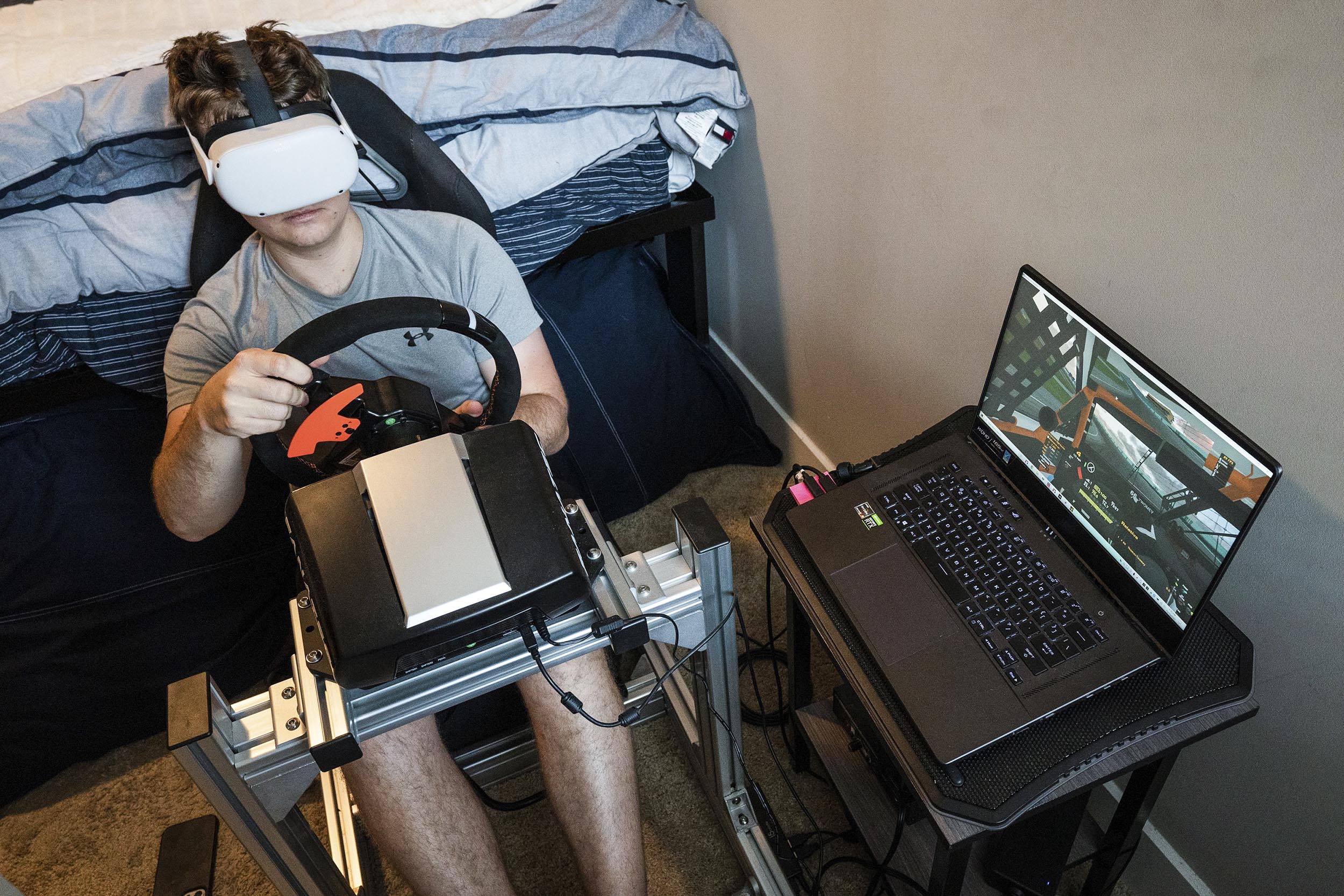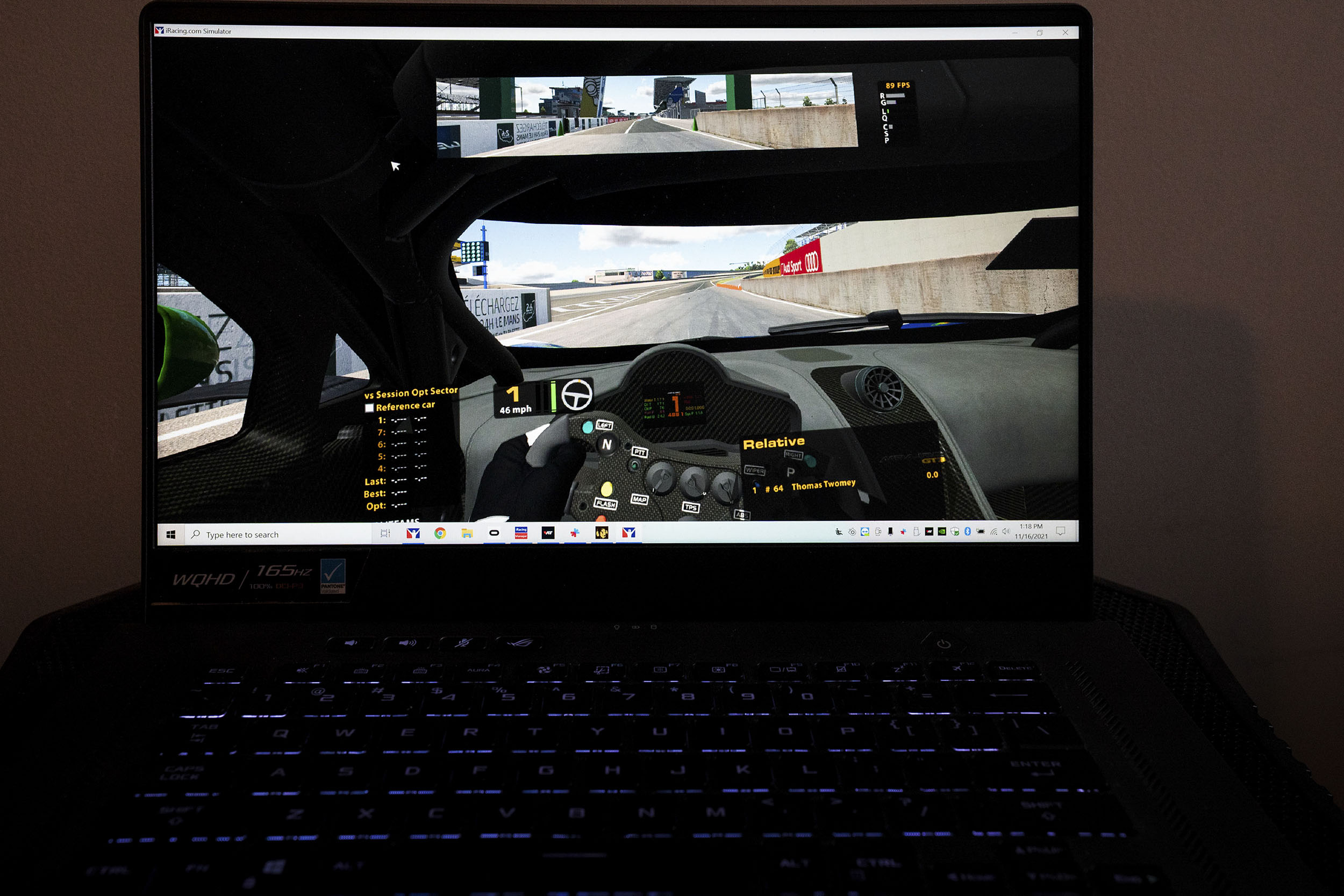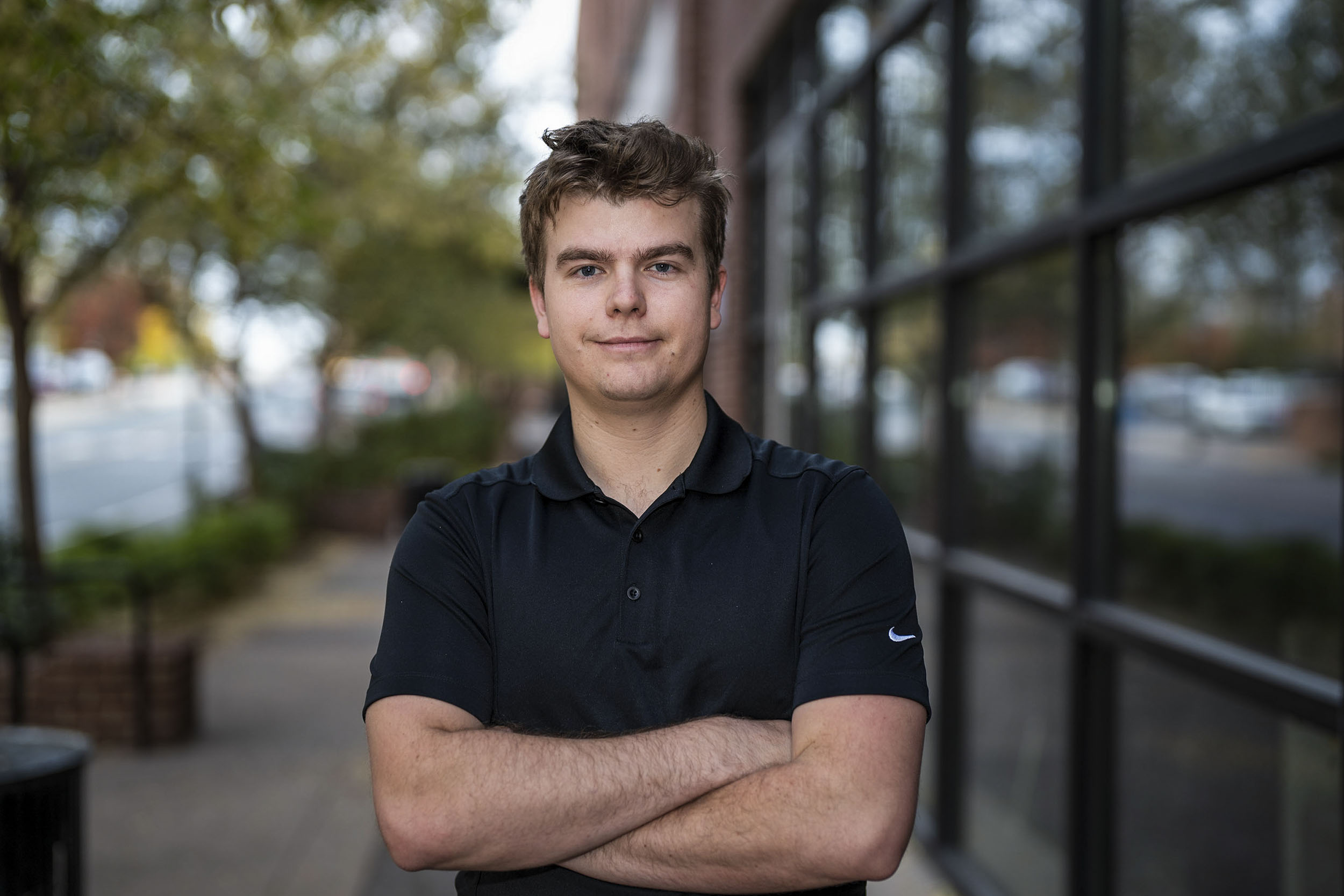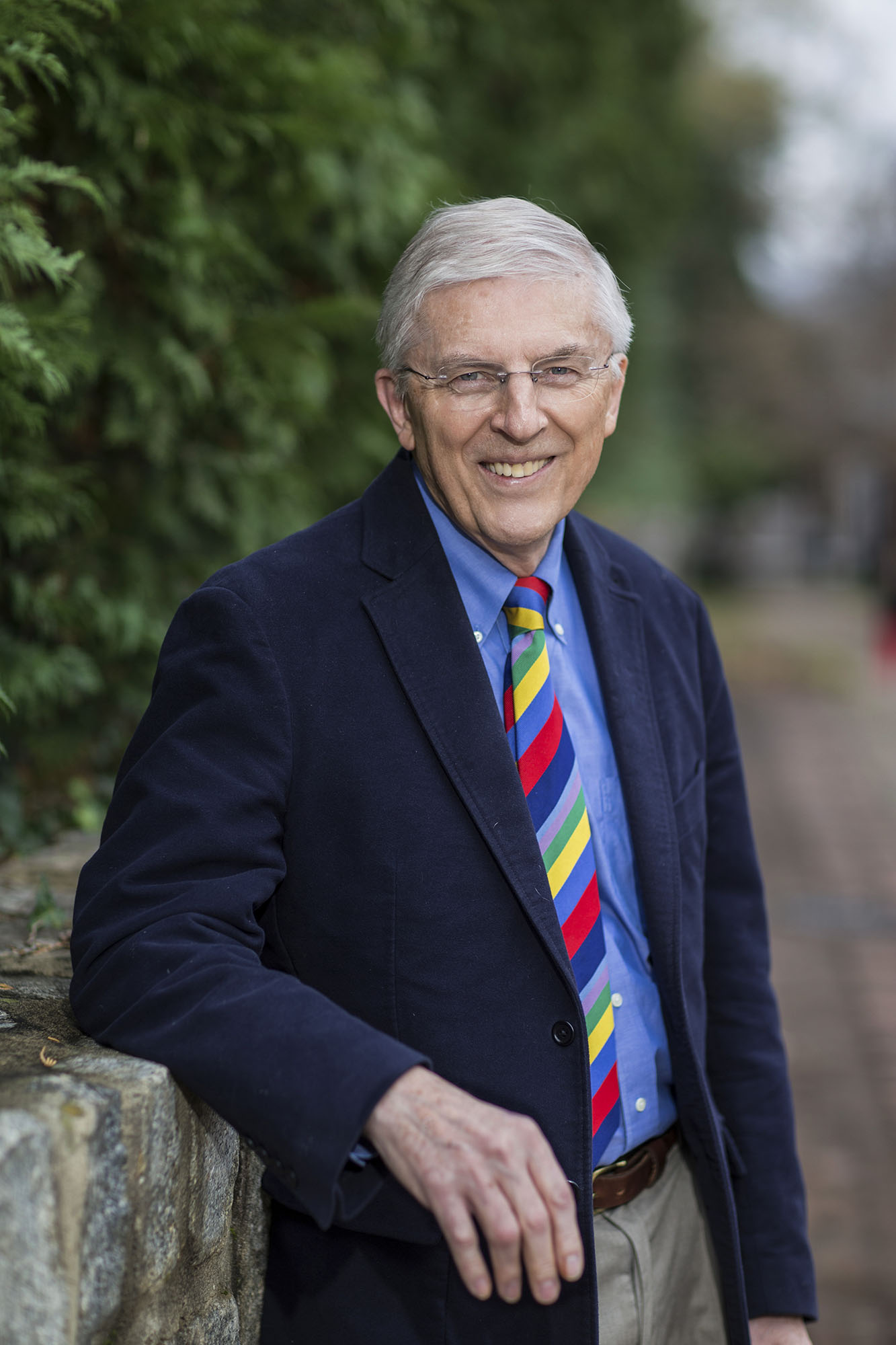Thomas Twomey’s body is a few inches above the floor of his bedroom, supported by a silver-colored aluminum frame. He’s clutching a black Formula One-style steering wheel with finger controls to shift gears; white virtual-reality goggles are clamped to his head.
His mind, however, is at Le Mans, the French track that is home to a famed 24-hour endurance race, the images of which are rushing past his eyes.
Others in the room can see what he sees on a laptop display: the view through the windshield of his “car” and a smaller screen-within-a-screen above it that represents the rearview mirror, informing him virtually of where he had just been a second before, as if he had actually just been there.
The road rises, falls, banks and straightens, as Twomey, focused on his task, controls the movement of his virtual racer with a flick of his hand on the steering wheel. He plunges ahead, braking and accelerating with foot pedals as in a real car, shifting gears up and down with flat levers on the McLaren steering wheel. Like a seasoned pilot executing a difficult maneuver, Twomey makes it look easy, as if anyone who drives an automobile could do it.
A hubris-filled visitor tried it, and after only a few minutes was completely defeated by motion sickness brought on by swinging the virtual-reality vehicle around hairpin turns, up and down rises and dodging traffic bollards. While fully aware he was seated motionless, stable, inside a solid apartment building, to his eyes the speedway was rushing by alarmingly fast, with dips and curves. At one point, his virtual speedometer read 70 mph and he panicked. Still in third gear, he was afraid he would blow the transmission.
Twomey smiled and said, “Don’t worry. It happens to a lot of beginners.”
Some in the room feel sorry for the hapless driver. The only thing he had proven is that he is not Thomas Twomey.
Few are. A fourth-year University of Virginia systems engineering student, Twomey is an enthusiastic virtual race car driver with aspirations of doing the real thing.
Twomey was raised in San Diego, surrounded by a strong car culture – especially drag racing – though he was more attracted to track races because the drag races were over in a matter of seconds. The legacy of Riverside Racetrack, outside of Los Angeles, lingered, even though it was closed by the time Twomey was born.













